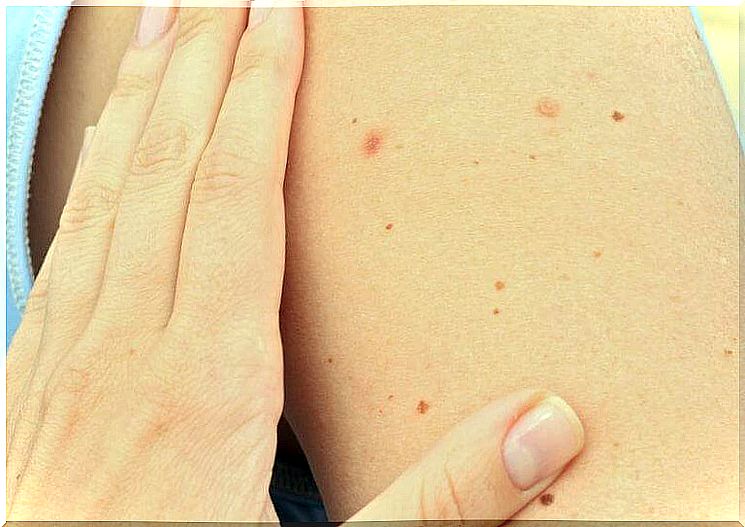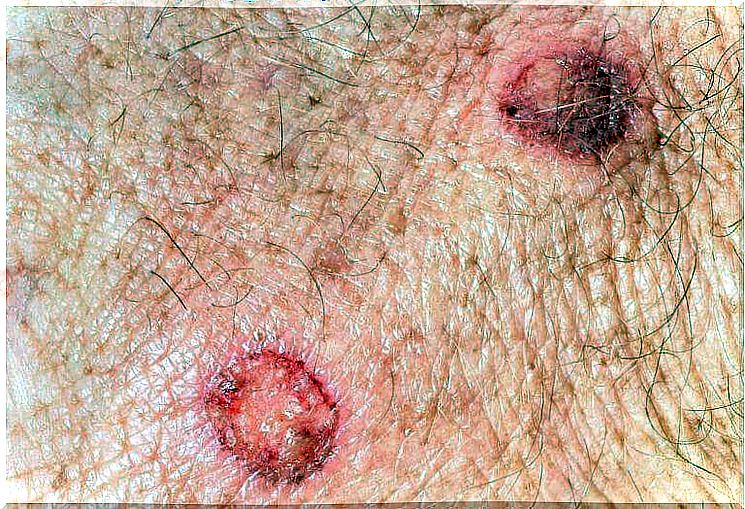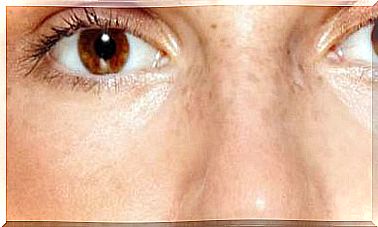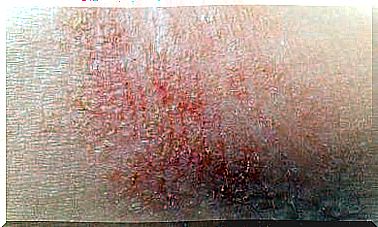How Do You Recognize Malignant Moles?
To recognize a dangerous mole, you have to pay attention to its color, the edges, asymmetry and diameter. But only a doctor can rule out with certainty that it is skin cancer.

Malignant moles are a phenomenon that you should definitely watch out for. Often times they develop from a normal mole that changes shape and color.
Any mole can potentially develop into a malignant skin cancer.
Skin cancer usually occurs from the age of 40. It is therefore important that you see a dermatologist if you notice a changed mole. If you wait too long, it can be a life or death.
Detect malignant moles

To distinguish a malignant mole from a normal one, there is the so-called ABCDE rule:
- Asymmetry. A malignant mole is usually asymmetrical. This means that half of the stain will look different from the other. This can be a sign of skin cancer.
- Limitation. A normal mole is round and clear. However, if the edges are frayed and irregular, it may be skin cancer.
- Coloring or staining. A very dark, reddish, or irregularly colored mole can be cancerous.
- Diameter. A diameter of over 6 mm is suspect. But smaller moles can also be malignant.
- Development. If you notice a change in size, shape, or color of a stain, you should definitely see a doctor.
Carefully monitor any moles on your body, preferably once a month. It is also important that you check your back while doing this, as many melanomas occur on the lower back.
Other signs of a malignant mole
While the signs described above are the most important ones when it comes to identifying a malignant mole, there are more. In some cases the symptoms are different from the norm.
Therefore, you should also look out for the following signs:
- Spread. If a mole spreads and spreads to surrounding skin, you should have it checked out.
- Redness and inflammation. See a doctor if there is inflammation around a mole.
- Itching, burning, or pain. A normal mole behaves just like the surrounding skin. But if he is more sensitive, it could be skin cancer.
- Changes in the surface. A mole that is bleeding or peeling off is definitely a cause for concern. Small bumps within a mole should also be examined.
If you experience one or more of these warning signs, you should see a dermatologist as soon as possible. Because only a specialist can then judge whether it is a malicious change.
Moles and skin cancer

A melanoma, malignant melanoma, or black skin cancer is a malignant tumor.
In the early stages, it often looks like a simple mole. This type of cancer can occur at any age. If it is recognized and treated in time, it is completely curable.
People with light skin are at the highest risk of developing melanoma. Sunlight and the use of tanning beds can also be a risk factor.
But about 10% of the cases have a genetic cause. If skin cancer has occurred in the family, other family members are at increased risk.
diagnosis

When you go to the dermatologist, they will first examine your skin closely. He looks at moles and the surrounding skin. He also examines all parts of the body for signs of black skin cancer.
If there is an unusual mole, he will do a biopsy. In the best case scenario, the doctor completely removes the stain in question during the procedure. The tissue sample is then sent to a laboratory and analyzed. Only then can you determine whether it is cancer.
The biopsy provides information about how deep the tumor has penetrated into the tissue.
Sometimes another lymph node biopsy needs to be done to rule out metastasis. Further radiological examinations of the brain, neck, abdomen, and pelvis may be necessary.









